- Home
- Winston Groom
The Generals
The Generals Read online
ALSO BY WINSTON GROOM
NONFICTION
Conversations with the Enemy (1982, with Duncan Spencer)
Shrouds of Glory (1995)
The Crimson Tide (2002)
A Storm in Flanders (2002)
1942 (2004)
Patriotic Fire (2006)
Vicksburg, 1863 (2009)
Kearny’s March (2011)
Shiloh, 1862 (2012)
The Aviators (2013)
FICTION
Better Times Than These (1978)
As Summers Die (1980)
Only (1984)
Forrest Gump (1986)
Gone the Sun (1988)
Gump and Co. (1995)
Such a Pretty, Pretty Girl (1998)
Published by the National Geographic Society
1145 17th Street NW Washington, DC 20036
Copyright © 2015 Winston Groom. All rights reserved. Reproduction of the whole or any part of the contents without written permission from the publisher is prohibited.
Library of Congress Cataloging-in-Publication Data
Groom, Winston, 1944-
The generals : Patton, MacArthur, Marshall, and the winning of World War II / Winston Groom. – 1st edition.
pages cm
Includes bibliographical references.
ISBN 978-1-4262-1549-0 (hardcover : alk. paper)
1. World War, 1939-1945–United States–Biography. 2. Patton, George S. (George Smith), 1885-1945. 3. MacArthur, Douglas, 1880-1964. 4. Marshall, George C. (George Catlett), 1880-1959. 5. Generals–United States–Biography. I. Title. II. Title: Patton, MacArthur, Marshall, and the winning of World War II.
D736.G69 2015
940.54›12730922–dc23
2015021562
The National Geographic Society is one of the world’s largest nonprofit scientific and educational organizations. Its mission is to inspire people to care about the planet. Founded in 1888, the Society is member supported and offers a community for members to get closer to explorers, connect with other members, and help make a difference. The Society reaches more than 450 million people worldwide each month through National Geographic and other magazines; National Geographic Channel; television documentaries; music; radio; films; books; DVDs; maps; exhibitions; live events; school publishing programs; interactive media; and merchandise. National Geographic has funded more than 10,000 scientific research, conservation, and exploration projects and supports an education program promoting geographic literacy. For more information, visit www.nationalgeographic.com.
National Geographic Society
1145 17th Street NW
Washington, DC 20036-4688 USA
Your purchase supports our nonprofit work and makes you part of our global community. Thank you for sharing our belief in the power of science, exploration, and storytelling to change the world. To activate your member benefits, complete your free membership profile at natgeo.com/joinnow.
For information about special discounts for bulk purchases, please contact National Geographic Books Special Sales: [email protected]
For rights or permissions inquiries, please contact National Geographic Books Subsidiary Rights: [email protected]
Interior design: Melissa Farris / Katie Olsen
eBook ISBN: 978-1-4262-1550-6
v3.1
To Susan Helmsing,
who has lived with this book
nearly as long as I have, with all love.
So as through a glass and darkly
The age long strife I see
Where I fought in many guises
Many names—but always me.
—George S. Patton Jr.,
a firm believer in reincarnation
CONTENTS
Cover
Other Books by This Author
Title Page
Copyright
Dedication
Epigraph
Author’s Note
Preface
PART I: Beginnings
Chapter 1: First Captain, VMI
Chapter 2: Master of the Sword
Chapter 3: The Champion of Vera Cruz
Chapter 4: “Some Damned Foolishness in the Balkans”
Photo Insert 1
Chapter 5: Courage Was the Rule
Map of Meuse-Argonne Offensive
PART II: Between the Wars Chapter 6: The Sad, Great Heap of Fleurs Blanches
Chapter 7: “I Am All He Has”
PART III: Brave as Lions, Bold as Bulls
Chapter 8: This Means War
Chapter 9: There Will Be a Big Tank Battle in the Morning
Map of North African Campaign
Map of Operation Husky
Chapter 10: “I Shall Return”
Map of Defense of Bataan
Map of Pacific Theater
Chapter 11: Overlord
Chapter 12: Let’s Win It All
Map of Operation Overlord
Map of Battle of the Bulge
Photo Insert 2
Chapter 13: These Proceedings Are Closed
Chapter 14: Old Soldiers Never Die
Notes
Notes on Sources and Acknowledgments
Bibliography
Illustrations Credits
AUTHOR’S NOTE
U.S. Army generals do not wear insignia of the division in which they serve, such as infantry, armor, artillery, signal corps, and so on. They are supposed to be masters of all the branches—“branch immaterial,” as the saying goes.
There are five ranks for generals in the U.S. Army. A single-star brigadier general, in theory, leads a brigade composed of men in squads of a dozen or more. These are arranged with four squads to a platoon, which come four platoons to a company—four to as many as eight of which make up a battalion—several or more of which form a brigade of four thousand to six thousand men. A two-star major general commands a division, which is composed of several brigades. A three-star lieutenant general commands an army corps, which is composed of several divisions. A four-star general of the army commands an army consisting of several corps, and a five-star general of the armies commands more than one army, such as General Dwight D. Eisenhower did in the European theater in World War II.
This sounds cut-and-dried, but it isn’t, because of the way ranks are made; however, as a rule it’s the way it’s supposed to work.
PREFACE
Generals are a breed apart in the U.S. military. It’s not simply a matter of higher rank; to wear the stars of a general in the American army is to belong to one of the most exclusive clubs on earth. Throughout the pages of history generals in war have often passed into outsize legend. Americans have seen fit to elect twelve generals to the U.S. presidency, but even before there was a United States of America generals ruled the earth.
Take for example Alexander the Great, who was born in 356 B.C. in Macedonia (ancient Greece). He was tutored as a youth by Aristotle and educated in the manner of all royal Macedonian boys to read, ride, fight, hunt, contemplate, paint, and play the harp. When he was ten, according to the Macedonian philosopher and historian Plutarch, Alexander’s father informed him, “My boy, you must find a kingdom big enough for your ambitions. Macedon is too small for you.”
At the age of twenty, after the assassination of his father, he succeeded to the throne and took command of the Macedonian army. Then he set out to conquer the world.
With a force of 6,000 cavalry and 50,000 foot soldiers, and a fleet of 120 ships crewed by 40,000 sailors, in 334 B.C. Alexander crossed the Hellespont into Asia, which was then ruled by the Persian Empire of King Darius III. Once on Asian soil, he threw a spear into the ground and claimed it for himself “as a gift from the gods.”
After liberating half a dozen cities along the Ionian coast,
Alexander marched inland to Phrygia in Anatolia (Turkey) where he came upon the famous Gordian Knot that had been tied by the legendary King Gordias—who had decreed that anyone able to undo the knot would become “the king of Asia.” Alexander hacked the thing apart with his sword and marched on to Syria where he encountered Darius and his vast army.
Slipping through the Pass of Jonah, Alexander placed his men in a terrain of mountains and rivers that gave him a tactical advantage over Darius’s vastly superior forces, said to number 100,000. After Darius’s cavalry broke itself on a stout Greek phalanx, Alexander personally led a charge that frightened King Darius to the extent that he ran off leaving his wife and entire family to the tender mercies of the Greeks. His army likewise fled, giving Alexander possession of Syria, where, we are told, he massacred the men of military age and sold the women into slavery.
He next marched through Jerusalem to Gaza where he was forced to conduct a siege at an Egyptian fortress. Although he was wounded in the shoulder by a spear, Alexander again won the battle, massacred the men, sold the women, and marched on into Egypt where he founded the soon-to-be prosperous city of Alexandria.
He continued to pursue Darius through Mesopotamia (Iraq) and Persia (Iran), overrunning every army in his path, acquiring a herd of a thousand of Darius’s war elephants, until he eventually reached present-day Bangladesh. There, with Darius dead and the Persian Empire under his command, Alexander’s army mutinied, refusing to continue after years of constant battles. The men were homesick, their spokesman said. That was the farthest extent of Alexander’s conquests, and in 323 B.C., he died a painful death at the age of thirty-two, in the palace of Nebuchadrezzar in Babylon, possibly from poisoned wine.
In his time, Alexander became the world’s foremost warrior, having disposed of all competitors and expanded his empire’s territory manifold. Nearly two thousand years later, however, the role of the general has evolved. Modern American generals no longer fight wars of conquest; their success is not based solely on ground gained or lost, but instead on how quickly they can obtain victory and turn war into peace, which presents a professional contradiction for a soldier’s job is to fight.
Still, there are striking similarities between modern and ancient battlefields, allowing many of Alexander’s lessons in leadership, strategy, and tactics to still be taught in the military academies and colleges today. Indeed, over the course of human history, the general’s mission might have changed, but the core values and responsibilities have remained the same. As gods among men, they not only decide who lives and who dies but how the rest of us live. We are, and always will be, mere players on their stage.
THE THREE OFFICERS AT ISSUE HERE were born not into the previous century but into the one before that. As a young boy, Douglas MacArthur withstood attacks by hostile Indians as his army officer father, a hero of the Civil War, traveled from post to post in the Old West. George Patton, who became the richest man in the army, was fifteen years old before the first automobiles appeared in his California hometown. George Marshall was a teenager attending the Virginia Military Institute when the entire cadet corps signed a document offering their services to the U.S. Army, which was fighting in the Spanish-American War of 1898.
Each, too, was extraordinary in his own way. Patton had to overcome a learning disability; Marshall was in the beginning a poor student; MacArthur, “who learned to ride and shoot before he learned to read and write,” lived in the shadow of his army general father, who had been awarded the Medal of Honor. These three rose steadily through the officers’ ranks, were hammered into sturdy metal in the crucible of World War I, and arrived at the top just as World War II was about to begin. They soon proved to be outstanding, whether in the field—as were MacArthur and Patton—or managing the vast planning and logistics, which Marshall did as chief of staff.
By the time MacArthur, Patton, and Marshall reached the rank of general, armies had become too large to lead from the fighting front and the military had long since abandoned the practice of putting its top leaders in harm’s way. While Patton and MacArthur took pains to place themselves in the front lines, it is still difficult to compare them with earlier great chieftains of history such as Hannibal, Alexander, or Scipio, all of whom led their troops into battle and fought alongside their men.
Along with Marshall, Patton and MacArthur are more comfortably identified with the Napoleonic era. It would be easy to feature George Patton as Napoleon storming through Europe at the head of great armies; MacArthur could be likened to the Iron Duke, Wellington, directing his hordes against the French menace, and Marshall might be compared to the great Prussian military strategist Carl von Clausewitz, who fell into a state of melancholy after Napoleon’s defeat at Waterloo because he no longer had any opportunity to distinguish himself on the battlefield.
Like their predecessors, all three generals also became famous after returning home from war. Excellent motion pictures were made of Patton’s and MacArthur’s careers in World War II, starring George C. Scott and Gregory Peck, respectively. They were accurate portrayals and filmed with such strong characterizations that it is hard to imagine these vivid field generals on the screen as being anything or anyone other than the movie stars who played them.
The specter of George Marshall, on the other hand, has faded since he was an eternal newsreel headliner as the army’s chief of staff, secretary of state, and secretary of defense. Few people fully realize the efforts he expended trying to rein in the likes of Patton and MacArthur, both of whom often behaved as though they were a thing unto themselves. But as long as there was a fight, Marshall kept them in it, never losing sight of the fact that a war had to be won and Patton and MacArthur gave their country the best chances to accomplish that.
UNLIKE BEING A CEO of a major corporation, the very essence of a general, or any professional soldier for that matter, is a contradiction. For their entire career they are trained to fight and kill and conquer and yet, the more effective they are, the quicker they return to peace and the problems that peace often presents—dynamic changes in power, uncertainty, unrest.
As we will see in the following pages, peacetime is not always kind to generals and they do not necessarily do well outside their task of generaling. Perhaps that is because during war they become as close to gods on earth as we are ever likely to see.
Patton and MacArthur were the shrewdest, most aggressive, battlewise, and successful generals in the field. They were also—including Marshall—among the most colorful, interesting, and, at times, exasperating characters to come out of the Second World War. Their stories are linked as closely as any other set of generals in history and when they died they passed into legend, long linked with their names.
PART I
BEGINNINGS
CHAPTER ONE
FIRST CAPTAIN, VMI
For George Marshall’s entire army career he’d longed to be a combat officer, but it was not to be. He possessed an uncanny genius for organization and leadership that perennially led him to staff duty. Staff officers solve problems, large or small, day or night, all night long if necessary.
They concern themselves with sticky questions, ones that often involve weighty matters, such as who should or should not be in command and where important military resources should be used. It could even involve a simple thing like trimming a tree while trying to place an artillery battery on an obscure Caribbean island, and therein lies a tale.
Marshall had been sworn in during a 3 a.m. emergency meeting at the War Department on September 1, 1939, a day that by coincidence carried more ominous portent than any U.S. Army chief of staff has had to contend with before or after. It was the day Germany invaded Poland, starting World War II. Soon after, the U.S. War Department began to try and convince the Dutch to place a battery of U.S.-made 155mm howitzers on the islands of Aruba and Curaçao, which were in Dutch possession. Because of their proximity to oil-rich Venezuela, these islands contained the world’s largest oil refineries, run by the sta
te petroleum company Royal Dutch Shell. U.S. forces, alarmed by the imminence of war, feared this valuable resource could be cut off, as was certainly threatened when Hitler’s armies conquered and occupied Holland, and German submarines and even a large German raider ship had been sighted in the area. This might be seen as a small factor in the larger scheme of things, but Marshall was never one to avoid details. No good staff man could afford to.
It was on a Sunday in early 1942 when Marshall was looking forward to a leisurely afternoon at Dodona, his elegantly restored nineteenth-century manor house and gardens in Leesburg, Virginia, about half an hour’s drive from the War Department in the capital.
Mrs. Marshall, however, had different plans. There was a large tree on the lawn that had been nagging at her for months. Some of its limbs were growing the wrong way, stunting growth on the other branches, and needed to be cut.
Casual help, such as yardmen, was impossible to get because of the war, “so she took me out there on this Sunday afternoon and sicced me on this tree,” said Marshall, who was sixty-one years old at the time, “and I climbed up there with a saw and started on the limbs.”
It was a grueling climb, Marshall recalled, but no sooner had he begun sawing than there came a telephone call from the War Department, chief of staff’s office. Dutifully, he climbed down to receive it and, sure enough, a German raider had been spotted prowling ominously off the Venezuelan coast, “and they were afraid,” Marshall said, “it was after these Dutch oil refineries.”
Marshall told the officer on the phone to fly up that same afternoon to Hyde Park, New York, where President Franklin Roosevelt was spending the weekend, and see if he would authorize a message to Queen Wilhelmina of the Netherlands* requesting her to give immediate permission for the United States to set up artillery batteries on the islands.

 El Paso
El Paso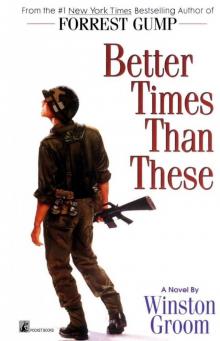 Better Times Than These
Better Times Than These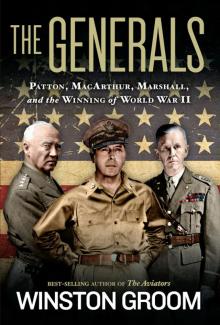 The Generals
The Generals 1942: The Year That Tried Men's Souls
1942: The Year That Tried Men's Souls Forrest Gump
Forrest Gump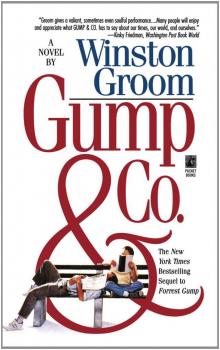 Gump and Co.
Gump and Co.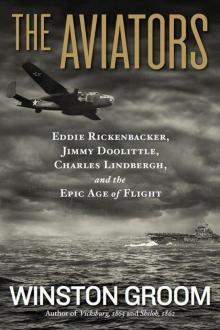 The Aviators
The Aviators Shrouds of Glory
Shrouds of Glory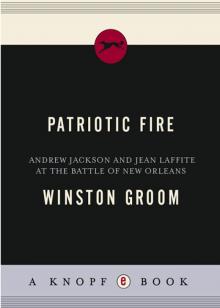 Patriotic Fire
Patriotic Fire Kearny's March
Kearny's March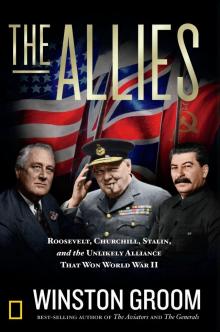 The Allies
The Allies Gump & Company fg-2
Gump & Company fg-2 Forrest Gump fg-1
Forrest Gump fg-1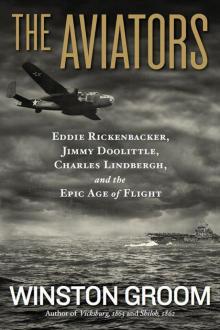 The Aviators: Eddie Rickenbacker, Jimmy Doolittle, Charles Lindbergh, and the Epic Age of Flight
The Aviators: Eddie Rickenbacker, Jimmy Doolittle, Charles Lindbergh, and the Epic Age of Flight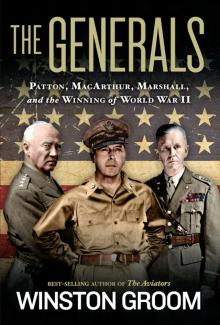 The Generals: Patton, MacArthur, Marshall, and the Winning of World War II
The Generals: Patton, MacArthur, Marshall, and the Winning of World War II